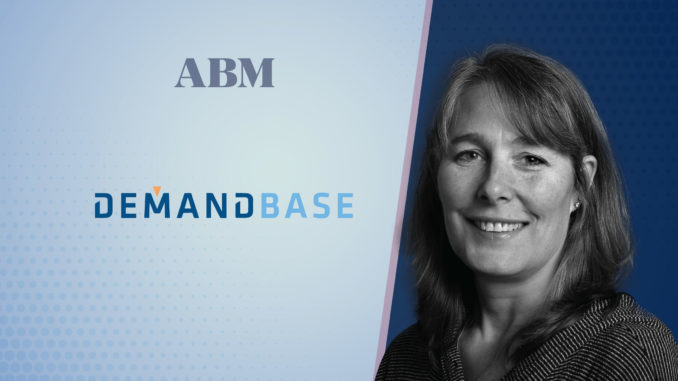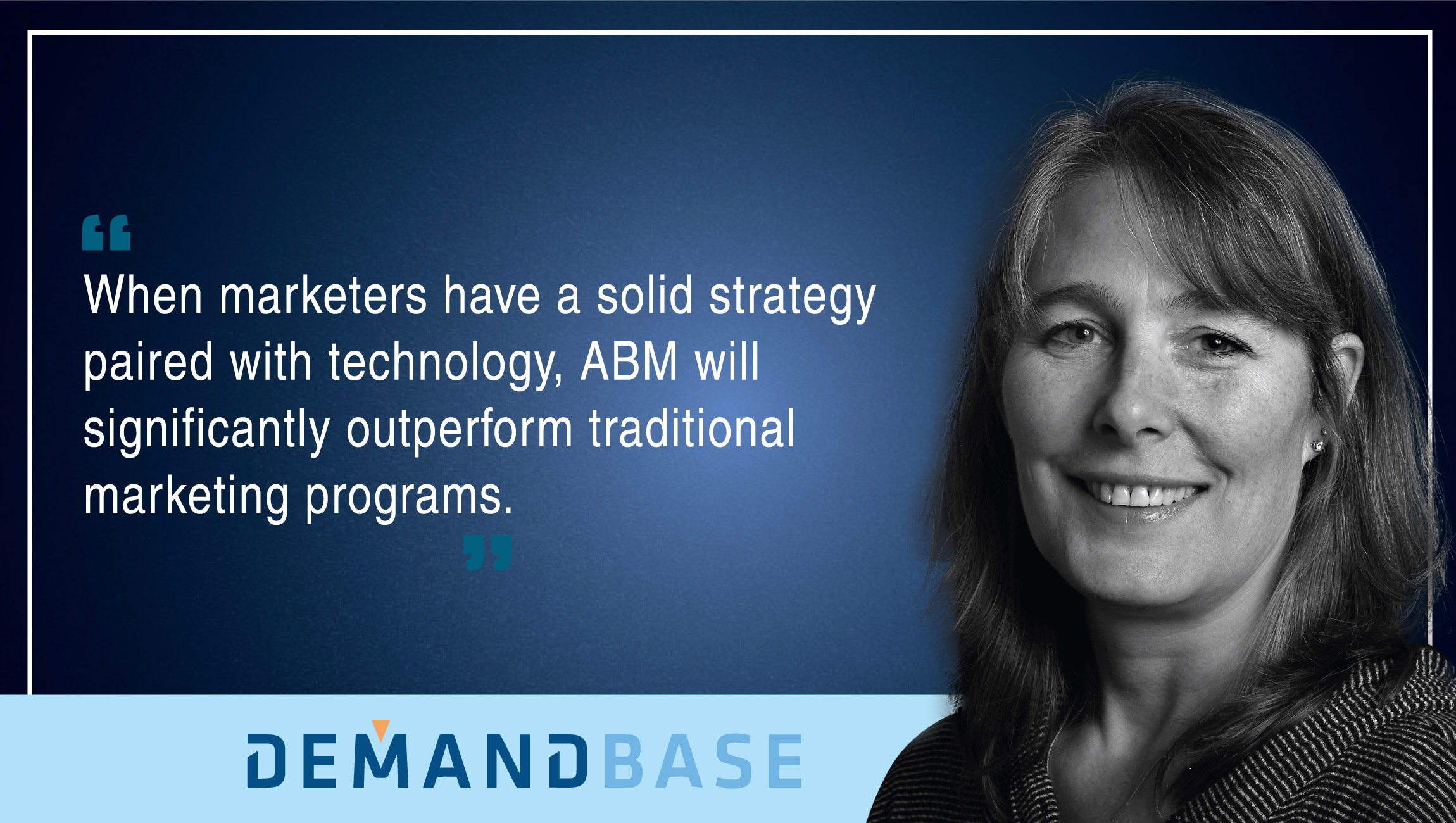

Could you tell us about your role and the team/technology you handle at your company?
I’m the Senior Director of Digital Marketing and Brand at Demandbase. Not only am I responsible for driving the top-of-funnel Marketing, but I’m also an Account-Based Marketing (ABM) evangelist. As a marketer at a company that offers the leading ABM platform, I am always pushing myself to innovate using our own technology to drive the business and help our customers do the same.
How do you see ABM evolving with the maturity of Customer Data, Intent Data, CRMs, and Personalization platforms?
ABM technologies, whether they are standalone or ABM features within existing platforms, are exploding in the marketplace. More marketers are starting to adopt technologies to pilot or scale their ABM programs. The key is to make sure your ABM technologies are deeply integrated. A superficial integration will limit the insights you can get as well as the actions you can take. Data needs to flow bi-directionally between the systems so everyone has the same information. Making sure there are plans for how to act on the data — especially changes in intent — can be crucial in capitalizing on interest and can help accelerate deals that might traditionally take a long time.
ABM is still pretty new for a lot of marketers. But it’s so inspiring to see how access to account-based data has been able to bridge divides that have separated Sales and Marketing teams for years. It takes time but building trust and the ability to more accurately demonstrate the value Marketing brings to Sales and more broadly, to the company, is a game changer.
What skills and talent make an excellent ABM team?
Collaboration, Flexibility and Persistence. Getting started with ABM can be done quickly but many teams want to go beyond the basics and scale out their programs. The most successful teams are great collaborators. They’re able to bring others along, from other marketers to Sales to Operations to Customer Success. Flexibility is important as there are a lot of unknowns for teams as they adopt and scale their ABM programs. Identifying challenges and finding creative ways to quickly adapt will help keep your strategy moving forward. And you can’t just “set it and forget it” when it comes to ABM. The needs of the organization changes which can impact the target account selection criteria. New technology is introduced. And the alignment between Sales and Marketing requires nurturing. High-functioning ABM teams need persistence to ensure programs continue to deliver and increase in efficiency.
How can B2B marketers benefit from your recent survey on ABM Tech Stack?
Our recent survey showcases the opportunity that exists with ABM. While 81% of marketers are currently using or are considering adopting ABM, 70% of them are just beginning their journey, whereas only 9% would consider themselves on the mature end of the spectrum with regular use of ABM. Technology plays a huge part in an organization’s ABM success. When marketers take the time to identify the technology they need and commit the resources to integrating it, they are almost three times more likely to fall into a higher maturity range than those who don’t have a tech stack supporting their ABM.
But technology alone is not the answer. A new tool can be great at first but it won’t provide companies with value (or worse, it can get in the way) without taking the time to consider what problems the technology will solve for them, identify the specific use cases they will apply to the technology, and define success metrics. When marketers have a solid strategy paired with technology, ABM will significantly outperform traditional Marketing programs.
Could you tell us about the most outstanding ABM strategy you have been part of, through Demandbase or partners?
There are so many great examples of how people are using Account-Based Marketing to make individual programs more effective. But the power of ABM is when an entire organization is aligned. DocuSign’s ABM program is very impressive. The company has a broad customer base ranging from individuals to small businesses to large enterprises. It has a clear ABM strategy that is discrete from the traditional demand generation which drives the need for the more transactional areas of the business. Through ABM, DocuSign identifies, attracts, engages, and nurtures accounts until it’s ready to hand off to its sales teams.
At Demandbase, I’ve been able to use ABM to make anonymous engagement with our Digital Marketing and website drive deals. Recently, our Sales team was able to close a deal in ten days after an account started showing up on the website after more than six months of inactivity.
How do you break through the noise of competitive messaging with ABM?
There is so much competition for a prospect’s attention. As consumers, we’re all exposed to how sophisticated B2C Marketing has become, and similarly in a business environment, when messages aren’t timely or relevant, there’s no reason to respond, or worse, a prospect may think negatively about your brand. B2B marketers can use ABM to create more relevant programs that can be timed more precisely. We can get in front of accounts earlier in the consideration cycle — often before our competitors do. And when complemented by the insights we can provide Sales, we can surround an account with a relevant message when they’re actively researching.
Do you think companies can still do away without an ABM Manager or ABM Team? How do you see ABM teams evolving in the next three years?
As so many organizations are new to ABM, there does need to be a resident ABM expert and evangelist. When this is an independent role, it indicates a level of organizational commitment to ABM. However, for the many, many teams who don’t have a formalized role, it is valuable to have someone identified and empowered by marketing leadership to be the ABM champion. Of course, it’s great when there are multiple ABM’ers — the more the better. These folks can help shepherd an organization through the ABM adoption process and educate marketers on how to shift from traditional demand gen. As the number of organizations mature in their ABM practice and ABM just becomes good B2B Marketing, these specialized ABM roles won’t be needed.
What are your predictions on the future of ABM and the growing competition globally?
ABM is here to stay. It will be the way marketers do B2B. And the explosion of technologies will subside and there will be a few primary technologies which will be the standard for all ABM practices. Sales and Marketing will work much more closely together to define go-to-market strategies. And it will be much easier for marketers to scale highly personalized programs that hit their marks at the right time.
Mimi Rosenheim is passionate about helping companies drive demand with engaging, user-centric programs. Her innate curiosity has led her to hold roles across marketing, including Web Strategy, Product Marketing, Demand Generation and Marketing Operations for a variety of brands such as Bank of America, Adobe and Castlight Health. Mimi has long been an advocate of ABM, having pioneered the strategy at Castlight Health. She now leads Demandbase’s Digital Marketing and Brand efforts with a team of fun-loving ABM marketers.
The biggest and fastest growing companies in the world rely on Demandbase to drive their Account-Based Marketing strategies and maximize B2B marketing performance. We pioneered the ABM category nearly a decade ago, and today we lead the industry as an indispensable part of the B2B tech stack. Demandbase offers the only end-to-end ABM Platform that helps B2B companies identify, win and grow the accounts that matter most. Our success would not be possible without the driven and collaborative teams here at Demandbase. As a company, we’re as committed to growing careers as we are to building world-class technology. We invest heavily in people, our culture and the community around us, and have continuously been recognized as one of the best places to work in the Bay Area.
The post TechBytes with Mimi Rosenheim, Sr. Director of Digital Marketing at Demandbase appeared first on MarTechSeries.
